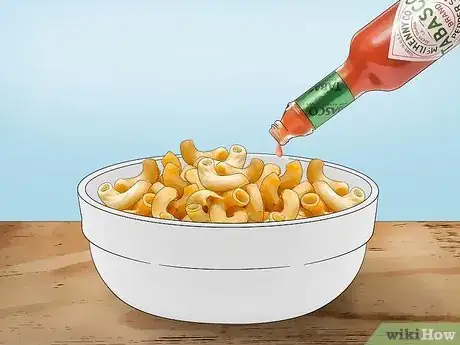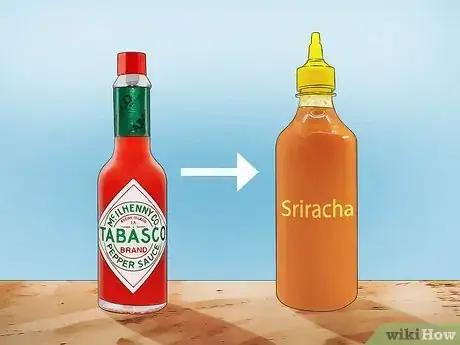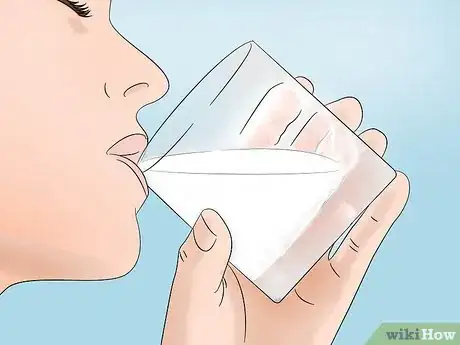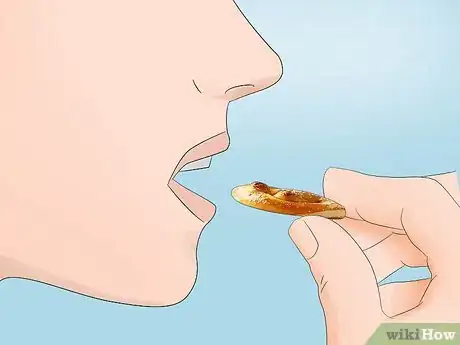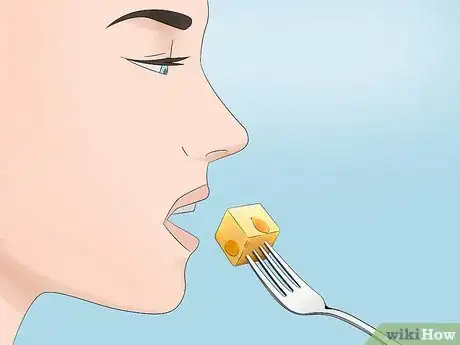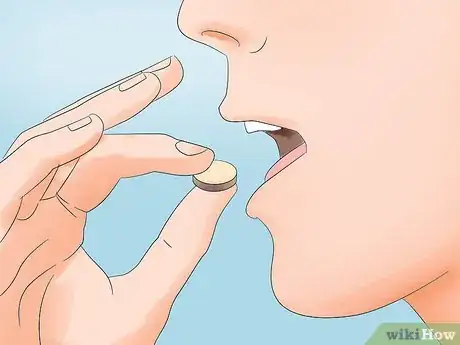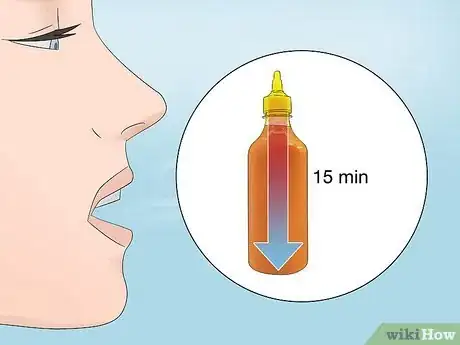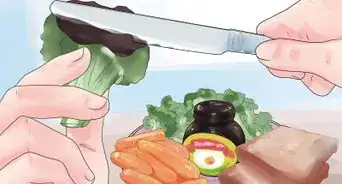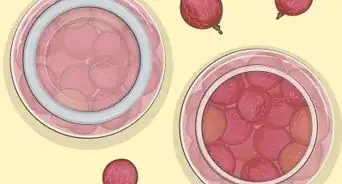This article was co-authored by wikiHow staff writer, Eric McClure. Eric McClure is an editing fellow at wikiHow where he has been editing, researching, and creating content since 2019. A former educator and poet, his work has appeared in Carcinogenic Poetry, Shot Glass Journal, Prairie Margins, and The Rusty Nail. His digital chapbook, The Internet, was also published in TL;DR Magazine. He was the winner of the Paul Carroll award for outstanding achievement in creative writing in 2014, and he was a featured reader at the Poetry Foundation’s Open Door Reading Series in 2015. Eric holds a BA in English from the University of Illinois at Chicago, and an MEd in secondary education from DePaul University.
There are 18 references cited in this article, which can be found at the bottom of the page.
wikiHow marks an article as reader-approved once it receives enough positive feedback. In this case, several readers have written to tell us that this article was helpful to them, earning it our reader-approved status.
This article has been viewed 409,342 times.
Learn more...
Spicy food is admired all over the world, but that doesn’t necessarily mean that everyone is used to it. Luckily, you too can learn to love the heat if you’re willing to put the effort in to challenge your palette with some spice! Adapting to spicy food may be hard at first, but you’ll open the door to so many new dishes and cuisines if you can make the change. On top of that, spicy food is good for you. Studies have shown that spicy dishes can lower your cholesterol, help with weight loss, and jump-start your metabolism.[1]
Steps
Community Q&A
-
QuestionWhat if it hurts my stomach?
 Leyla JeenaCommunity AnswerIf the spicy food hurts your stomach, it is most likely that you ate the spicy food too quickly or that you ate too much. If this happens, drink milk or take a heartburn pill.
Leyla JeenaCommunity AnswerIf the spicy food hurts your stomach, it is most likely that you ate the spicy food too quickly or that you ate too much. If this happens, drink milk or take a heartburn pill. -
QuestionWhat are the different levels of spicy?
 Community AnswerSpiciness is measured by the Scoville scale; a Jalapeño is around 3,500 Scoville whilst the hottest pepper in the world - the Carolina Reaper - is around 1,500,000.
Community AnswerSpiciness is measured by the Scoville scale; a Jalapeño is around 3,500 Scoville whilst the hottest pepper in the world - the Carolina Reaper - is around 1,500,000. -
QuestionCan hot and spicy foods harm my taste buds?
 Community AnswerNo, spicy foods do not do any damage to your taste buds. It only feels painful because a chemical in spicy foods binds to your pain receptors and creates a feeling of pain, despite no harm actually happening.
Community AnswerNo, spicy foods do not do any damage to your taste buds. It only feels painful because a chemical in spicy foods binds to your pain receptors and creates a feeling of pain, despite no harm actually happening.
References
- ↑ https://penntoday.upenn.edu/news/spicy-foods-eat-or-not-eat
- ↑ https://www.seriouseats.com/2010/08/how-to-build-a-tolerance-for-spicy-foods.html
- ↑ https://www.therecipe.com/sriracha-or-tabasco-the-scoville-heat-units-of-10-most-common-hot-sauces/
- ↑ https://www.theatlantic.com/health/archive/2015/02/learning-to-handle-spicy-food/385606/
- ↑ https://www.nytimes.com/2017/09/29/magazine/how-to-eat-spicy-food.html
- ↑ https://www.discovermagazine.com/mind/how-do-we-tolerate-spicy-food
- ↑ https://www.seriouseats.com/2010/08/how-to-build-a-tolerance-for-spicy-foods.html
- ↑ https://www.thrillist.com/eat/nation/different-types-of-chili-peppers-explained
- ↑ https://www.seriouseats.com/2010/08/how-to-build-a-tolerance-for-spicy-foods.html
- ↑ https://news.psu.edu/story/578794/2019/06/25/research/milk-best-drink-reduce-burn-chili-peppers
- ↑ https://www.seriouseats.com/2010/08/how-to-build-a-tolerance-for-spicy-foods.html
- ↑ https://news.psu.edu/story/578794/2019/06/25/research/milk-best-drink-reduce-burn-chili-peppers
- ↑ https://slate.com/human-interest/2019/03/spicy-food-hot-sauce-explained-faq.html
- ↑ https://www.houstonmethodist.org/blog/articles/2020/sep/how-to-cool-your-mouth-down-after-eating-spicy-food/
- ↑ https://food.ndtv.com/food-drinks/what-should-you-do-to-get-relief-from-eating-spicy-foods-1795367
- ↑ https://www.seriouseats.com/2010/08/how-to-build-a-tolerance-for-spicy-foods.html
- ↑ https://www.thekitchn.com/cant-take-the-heat-how-to-eat-93271
- ↑ https://food.ndtv.com/food-drinks/4-effective-remedies-to-cool-your-mouth-after-eating-spicy-food-1340250
- ↑ https://www.houstonmethodist.org/blog/articles/2020/sep/how-to-cool-your-mouth-down-after-eating-spicy-food/
- ↑ https://food.ndtv.com/food-drinks/4-effective-remedies-to-cool-your-mouth-after-eating-spicy-food-1340250
- ↑ https://www.vox.com/2015/7/23/9017297/eating-spicy-food
- ↑ https://www.vox.com/2015/7/23/9017297/eating-spicy-food
- ↑ https://www.businessinsider.com/the-beginners-guide-to-eating-spicy-food-2016-10
- ↑ https://www.theguardian.com/lifeandstyle/2019/aug/04/hard-to-swallow-the-problem-with-taking-too-many-antacids-indigestion
- ↑ https://www.thekitchn.com/cant-take-the-heat-how-to-eat-93271
- ↑ https://penntoday.upenn.edu/news/spicy-foods-eat-or-not-eat
- ↑ https://www.popsci.com/science/article/2013-06/fyi-are-people-born-tolerance-spicy-food/
- ↑ https://www.livescience.com/34213-spicy-food-taste-buds-myth.html
About This Article
To adapt to spicy food, start by trying foods that are only a little spicier than what you’re used to. For example, add a few red pepper flakes to your meal or try a spicy candy. Then, gradually increase the amount of spice in your food either by adding more spice to your dishes or by eating larger quantities of the food. If you try something that’s still too spicy for you, eat starchy foods such as bread or potatoes to absorb some of the heat. For tips on what to drink when you’re trying to adapt to spicy food, read on!
